You might be reading this article because you’re one of the few people who either have a love-hate relationship or simply fell out of love with some modern 6- or 6.5-mm rifle caliber like those with the Creedmoor name on it. Or you might be shopping around for a backup deer rifle chambered for a light and fast caliber that is anything but a 6- or 6.5mm Creedmoor.
Or you might be someone who has this unexplainable itch to get a new rifle chambered for any caliber that is not usually recommended by anyone these days — one that people would refer to as a rifle loony.
Table Of Contents
Overbore calibers within the 6 to 6.5mm caliber range have been the rage for quite a while now. Whatever gun store you go to, if you ask for a modern hunting rifle caliber, there’s a good chance they’ll recommend a 6- or a 6.5-mm cartridge. And for a lot of good reasons I’m sure you already know (which is why we wouldn’t bother elaborating, but you can read this article if you’re so inclined).
Yet there’s just that part of you that wants to try something different, something you would want to differentiate yourself from your hunting buds as far as gun or caliber preference, maybe something that would give you identity too. And somehow, you ended up narrowing down your choices to two old calibers you’ve never heard a lot about: the .25-06 Remington and the .243 Winchester.
You were probably told by people you know that one has been around longer, or one is more powerful than the other, or one is more versatile than the other, or one handles better than the other, and all these arguments got you confused. Now you’re on the fence — each caliber has its own merits and disadvantages. How do you decide?
If you’re in such a predicament, you’ve come to the right place. We did a fair bit of research on the subject so you won’t have to. But before you get to the comparison sections, you might want to take a step back, see where these two fine calibers came from just so you have an understanding of what each was originally designed for, where they stand currently and how one might be better than the other.
ADOLPH OTTO NIEDNER
You shouldn’t be surprised if gramps (or any other person you know who has been shooting for the last 65 years or so) finds it intolerable that whippersnappers like yourself do not see the merits of the .25-06 Remington. They grew up with it and probably have fond memories of taking down countless small game animals with it, possibly even used it to put venison in the fridge more than a few times.
That’s because the .25-06 Remington is 51 years old. It was introduced by Remington in 1969, and before it even became a mainstream cartridge, it had been around as a wildcat cartridge for almost five decades.
As of this writing, it’s around 99 years old if we add up all the years of its existence, which it owes in no small part to an expert gunsmith named Adolph Otto Niedner. It was in fact commonly known as the .25 Niedner during its wildcat days, and some folks to this day still refer to it by that very name.
Several different sources claim that there were more than a few different wildcat handloaders who experimented with the same basic concept from the late 1800s to the early 1900s but the one person credited with the development of the caliber we know today as the .25-06 Remington was expert gunsmith Adolph Otto Niedner.
One of the most influential custom gunsmiths of his day, A.O. Niedner was born and raised in 1864 in Malden, Massachusetts and grew up working in his father’s factory as a machinist. In his early teens he served in the U.S. Army in Colorado but was discharged not too long after he was discovered to be underage.
Niedner then moved to Milwaukee and worked in a store for more than a few years, from which he grew tired and bored so he decided to join the Milwaukee Police. But his passion was for gunsmithing, not law enforcement, so in 1900 he moved back to Massachusetts where he again worked in his father’s factory. He started a sole proprietorship in 1906 in Malden building custom rifles.
Around this time, Niedner became a member of a gun club called the Massachusetts Rifle Association. It was founded in 1875 and is the oldest gun club in the country that is still active to this very day.
THE RISE AND FALL OF THE .25 NIEDNER
This association had many remarkable members at the time, among which are Harry Pope, one of the finest American barrel makers of all time; famous ballistician and writer Dr. Franklin Mann, author of “The Bullet’s Flight From Powder To Target“; and Eugene Patridge whose gun sights, often mispronounced as “partridge sights”, would become famous all over the world.
The expert machinist and gunsmith that he was, Niedner would work closely with these three fellow gun club members on a handful of projects that would later be known as some of the 20th century’s greatest innovations in the world of firearms. It was also around this time that he would start making custom rifles chambered for his very own wildcat cartridge mentioned earlier, the .25 Niedner.
A.O. Niedner originally developed his .25-caliber cartridge by simply necking down the .30-06 Springfield case to accept an 87-grain .25-caliber bullet. No other alterations were made to the parent case as far as dimensions. It was first and foremost a varmint cartridge, owing to the fact that any game species bigger than wood chuck was scarce in most of the inhabited areas in America during those days.
There was nothing particularly noteworthy about the .25 Niedner as far as ballistic performance because when it was developed, rifle powders on the market burned too fast, which negated any kind of powder capacity advantage its significantly big case offered. Still, it was just right for wood chuck and other small game species and was a lot of fun to shoot because of its light recoil.
Two years after the first World War, A.O. Niedner moved to Dowagiac, Michigan and opened a much bigger custom rifles shop, whereupon he hired several employees to help him build custom rifles, some of which were chambered for his .25 Niedner cartridge. Everything was just peachy in the following years, he was even elected Mayor in 1926. In the meantime, significant progress was being made in smokeless powder development.
In 1940, DuPont released their slow-burning IMR-4350. This development led to several underpowered rifle cartridges, both mainstream and wildcats, getting the chance to achieve their full ballistic potential. But during the course of the second World War, production of the IMR-4350 slowed down.
There were still a few IMR-4350 in circulation, and some were purchased by Roy Weatherby which he used to develop one of his earliest creations: a cartridge he would christen as the .270 Weatherby Magnum.
Six years later, Bruce Hodgdon acquired powder from dismantled Oerlikon 20mm cannon cartridges, a type that has an even slower burn rate than the IMR-4350. He sold it as the H-4831 and it became an instant hit.
The advent of slow-burning smokeless powders ushered in a new era in firearm cartridges: the era of magnum rifle calibers capable of higher velocity and even higher energy. These became the norm in the post-war years. As a direct result, weaker rifle cartridges without the magnum branding in their names either started their struggle for survival or fell by the wayside. The .25 Niedner was among these.
REMINGTON SAVES THE DAY
But as luck would have it, in the next two decades hunters would start to realize that the Weatherby’s magnum rifle calibers and the various Winchester and Remington belted magnum cartridges on the market were just a bit too powerful for whitetails.
And the rifles that chambered such powerful calibers were either sold exclusively by Weatherby or custom-built — going either route cost significantly more than any run-of-the-mill non-”magnum” rifle.
The majority of these hunters would shift their preference from expensive magnum rifle shooting platforms with a lot of unnecessary power and consequently more felt recoil to inexpensive ones that used thinner and lighter bullets capable of higher velocities and flatter trajectories but still had enough power to take deer and with significantly less recoil.
Remington, becoming aware of this preferential shift and having a knack for legitimizing decades-old wildcat rounds that have demonstrated ballistic effectiveness in the field, started chambering the .25 Niedner in their full-sized 24-inch barreled Model 700 rifle. Not too long after, they released the cartridge to the public but rebranded it as the 25-06 Remington.
Today, it might be nowhere near as popular as its competitor in this article or many of its other contemporaries, but because of its power and relative versatility, the .25-06 Remington has become an international favorite among hunters.
In Africa, it’s one of the most common calibers for plains game, in Europe it’s a recommended deer cartridge, and in Australia it’s one of the preferred calibers for kangaroo.
THE 6MM LEE NAVY
While the .243 Winchester is known to be ballistically inferior to the .25-06 Remington and many other cartridges of its caliber, it’s plenty fast, dangerously accurate and still adequate for up to deer-size game. And despite its age, it’s a modern cartridge in every sense. It might not be among the newest or hottest offerings on the market, but it’s still one of the most popular .24-caliber cartridges in America today.
Many other great cartridges came after it — the .243 Winchester Super Short Magnum, the 6mm Remington, the powerful .240 Weatherby Magnum, and the previously discussed .25-06 Remington. These killed off a great many older rifle cartridges from days of old, but the .243 Winchester simply refuses to die.
Because of limited data available online, it’s difficult to piece together the events that led to the birth of the .243 Winchester. The consensus among experts is people began experimenting with .24-caliber bullets in the early 1890s with Winchester releasing the 6mm Lee Navy cartridge (i.e. the 6mm U.S.N. or more commonly, the .236 Navy ). The caliber’s popularity started to soar with the introduction of the Lee Model 1895 straight-pull rifle.
In spite of extensive testing and subsequent adoption by the U.S. Navy and Marines from 1895 through 1899, it was a cartridge way ahead of its time, which benefitted it in terms of popularity but would eventually cause it to become obsolete.
For one thing, old ordnance metallurgy wasn’t up to snuff. The steel typically used in rifle barrels of those days was not as resistant to corrosion as it is today. Also, as mentioned in the previous section, smokeless powders available back then burned too fast. It was largely because of these two factors that shooting a lot of the 6mm Lee Navy resulted in excessive barrel fouling which in turn led to erratic pressures and inaccurate shots.
But in spite of these issues, Winchester and the U.S. Navy and Marines put a considerable amount of time and effort experimenting on rifling twist rates, powder loads, bullet weights and a lot of other things to fine-tune the 6mm Lee Navy, which led to the development of the .220 Swift in 1935 and eventually paved the way for the development of the .243 Winchester.
WARREN PAGE AND HIS SUPER POOPER
A .24-caliber projectile back in the day was an odd duck as far as bullets go. There was but a single .24-caliber cartridge produced in America before the .243 Winchester — it’s the aforementioned 6mm Lee Navy. As rifles chambered for this caliber were phased out in 1935, ammo availability followed suit.
The only other 24-caliber offering was the .240 Apex (also known as the .240 Magnum Rimless or the .240 Super Express to English hunters of the time) which was released in 1923 by Holland & Holland in England.
Though its effectiveness as a deer round might have convinced some wildcatters in America that there are merits to a .24-caliber for hunting medium game, it never gained popularity.
So for a while, there was a void in the market between cartridges that were smaller and weaker than the 6mm Lee Navy and ones that were bigger and more powerful, one of which would be released in 1952 and would become the parent cartridge of the .243 Winchester: the .308 Winchester.
The .308 Winchester, with its short-action case, appeared to have enough room for powder for pushing smaller-diameter bullets. It was what wildcat handloaders had been waiting for for decades. When it came out, they wasted no time in experimenting with it. The most notable of them was Warren Page, who is considered by many as one of the greatest American gun writers of all time.
No one knows exactly when Warren Page started experimenting with .24-caliber bullets for hunting rifles, but it was possibly within a few years of the 6mm Lee Navy being discontinued (i.e. in the early 1940s).
He ended up necking down the .308 Winchester case after its release the following decade. He called his creation the .243 Page Super Pooper and introduced it in his editorial column in Field & Stream magazine, which drove interest in a .24- caliber varmint round that can double as a deer round in a pinch.
A BLESSING FROM WINCHESTER
Shortly after hearing about the .243 Page Super Pooper, Winchester became aware of the presence of a slow but steadily growing demand for a .24-caliber dual-purpose hunting round.
They decided to meet that demand in 1955 by adopting the round as a legitimate Winchester offering and introducing it to sporting rifle enthusiasts. In the process, they aptly changed its name to .243 Winchester.
Winchester Ammunition and Winchester Rifles were being run by the same group of people around the time so the .243 Winchester was introduced as a new chambering for their famous Model 70 rifle.
Sales for both rifle and ammunition were strong. Not too long after, competing companies began offering their own rifles chambered for the cartridge while Remington and Federal released their own lines of .243 Winchester ammunition.
It’s important to note that before Winchester legitimized Warren Page’s wildcat, there were only two “dual-purpose” hunting rifle cartridges for varmints and deer in America, both used .25-caliber bullets. They were the .250-3000 Savage and the .257 Roberts.
Both pushed bullets that weighed a minimum of 87 grains and a maximum of 120 grains with velocities as high as 3,200 feet per second for lighter bullets and of 2,600 feet per second for the heavier ones.
These are some good ballistic figures, but it became apparent with the release of the .243 Winchester that hunters who were after coyotes, woodchucks and whitetails wanted something else.
Like its early competing calibers, the .243 Winchester was originally offered in two bullet weights: 80 grainers were primarily for varmints and 100-grain soft points were for deer. Velocities were advertised as 3,500 feet per second for lighter bullets and 3,070 feet per second for heavier ones, but these figures were a tad bit too high compared to real-world velocities.
Today, advertised velocities for the .243 Winchester factory ammunition are much more accurate and really show the cartridge’s true ballistic potential: Out of a 24-inch test barrel, 80-grain bullets can go as fast as 3,350 feet per second, and 100 grainers go up to 2,960 feet per second.
It’s great for its intended purpose — it has taken countless varmint species, deer and if you hand-load, even elk. But it’s ballistically weaker compared to its competitor in this article.
COMPARISON METHODOLOGY
We’ve seen a lot of videos online where people shoot all sorts of things like soda bottles, meat, concrete blocks and some other random stuff. We have nothing against what they do because one of the most important reasons for anyone to own a gun is to have fun shooting it.
But when doing these caliber comparisons, we prefer the good old method of research and analysis. To make it as fair to both contenders and as objective as possible, we’ll be comparing them on several different metrics related to ballistic performance (e.g. bullet weight, velocity, muzzle energy and recoil) and ammo availability (i.e. pricing).
If you’ve read through the entirety of the history section, it should be obvious to you at this point that both calibers are fairly common, notwithstanding one being far more popular than the other.
Thus, there are more than a handful of load options being offered by all known ammo manufacturers that vary by bullet weight, bullet type, velocity and price. It will take decades to compare and contrast all of them so we’re narrowing down our choices on which loads to compare for each caliber.
AMMO SELECTION
To make this as practical, as sensible and as apples-to-apples of a comparison as possible, we leveraged customer reviews and ratings on MidwayUSA and picked three of the most popular loads across three power categories: those with the lightest bullets that typically advertise some of the highest velocity figures (for varmint); those using the heaviest bullets (for deer-sized game); and loads right smack in the middle for any species in between (e.g. coyotes).
It’s important to note that as far as factory ammo selection, the .243 Winchester is leagues ahead compared to the .25-06 Remington simply because the number of available ammo brands for any given caliber is a function of demand which can be generated by a few things, one of which is popularity. We scoured the Internet for all factory ammo and found that there are just more brands available for .243 Winchester compared to those for .25-06 Remington.
Since both calibers can use practically the same types of bullets, we will not be comparing terminal performance for each, which means this comparison will not be as scientific as we’d want it to be, but there will be more than enough material for you to make an informed decision if that’s what you’re here for.
So without further ado, here are all the boring but important ballistic figures:
| Caliber | Brand | Bullet wt (gr) | Muzzle velocity (fps) | Muzzle energy (ft.lbs) |
|---|---|---|---|---|
| .243 Winchester | Hornady American Whitetail | 100 | 2960 | 1945 |
| .243 Winchester | Barnes VOR-TX | 80 | 3350 | 1993 |
| .243 Winchester | Winchester Ballistic Silvertip | 55 | 3910 | 1867 |
| .25-06 Remington | Winchester Super-X | 120 | 2990 | 2382 |
| .25-06 Remington | Barnes VOR-TX | 100 | 3225 | 2309 |
| .25-06 Remington | Winchester Ballistic Silvertip | 85 | 3470 | 2272 |
BALLISTIC ANALYSIS
Looking at the table above, it immediately becomes apparent that the .25-06 Remington is ballistically superior to the .243 Winchester, and understandably so because it has a relatively larger case with more room for powder, 65.8 grains vs.only 54.8 grains in the .248 Winchester’s case. That’s a case capacity difference of 20.07% favoring the .25-06 Remington.
Comparing the two heaviest loads on the table, Hornady’s American Whitetail .243 Winchester using a 100-gr. bullet and Winchester’s Super-X .25-06 Remington using a 120-gr. bullet, we see a difference of 30 feet per second favoring the .25-06 Remington despite the particular load using a projectile that is 20% heavier than the competition’s. This translates to around 22.46% more energy at the muzzle or an excess of 437 foot-pounds of force, again favoring the .25-06 Remington.
Going down a notch to compare middleweight bullets, Barnes’ VOR-TX .243 Winchester uses an 80-gr. bullet while the same manufacturer’s .25-06 Remington brand of ammo uses a 100-gr. bullet, 25% heavier grain-for-grain. This time, the .243 Winchester middle child gets the upper hand, running 125 feet per second faster. This velocity advantage unfortunately doesn’t translate to muzzle energy advantage, as the .25-06 Remington is still 15.85% more powerful..
And finally, comparing light loads, it’s important to note that as of this writing, the lightest we could find for the .25-06 Remington is Winchester’s Ballistic Silvertip using an 85-grain projectile. The lowest recorded bullet weight for this caliber is 60 grains but it’s nowhere to be found, so we’ll just have to make do with whatever’s available.
It’s interesting to note that not even Remington’s website has anything listed under their .25-06 caliber, which could mean they’ve discontinued ammo production for this caliber indefinitely.
All that said, the lightest loads for both calibers available as of this writing are manufactured by the same company, Winchester, with the .243 using a 55-grain bullet and the .25-06 using an 85-grain bullet. The .243 Winchester again gets the velocity advantage running 440 feet per second faster than its rival, but as with the middle loads, the .25-06 Remington is still more powerful with a 405 ft.lbf lead, a 21.69% energy advantage.
EVERYTHING ABOUT RECOIL
This is where things get a bit more interesting. Both calibers are known for their relatively gentle recoil especially when compared to their bigger, more powerful deer caliber competitors. And since recoil is a function of quantifiable variables (i.e. bullet weight, velocity, powder charge weight and firearm weight), it can be calculated.
Please note that the recoil figures we present in this section are only for benchmarking purposes. Felt recoil cannot be directly measured as it varies from person to person depending on non-quantifiable factors related to physiology and psychology (e.g. stature, pain threshold etc.), level of firearms familiarity, years of shooting experience and some other things we may not even be aware of.
As with the previous section, we want to make this recoil comparison as apples-to-apples as possible. Because of this, we used the weight value of only the lightest known factory rifle for each caliber on the market today: the Barrett Fieldcraft with a 24-inch barrel chambered in .25-06 Remington (weight: 6 lbs.); and the Sako 85 Carbonlight with a 24 ⅜-inch barrel chambered in .243 Winchester (weight: 5.3 lbs).
We’re aware that these two rifles have a very wide price gap between them, but we’re really only interested in using their weight figures for a real-world, apples-to-apples recoil comparison, so their price difference is irrelevant. Also, we picked them to represent a worst-case scenario for each caliber (because the lighter the rifle, the heavier the recoil).
An arbitrary number to represent rifle weight for both calibers (e.g. 8 lbs., which is the typical weight of a conventional bolt-action rifle with a 24-inch barrel) could have been used but we decided against it because in general, rifles chambered in different calibers vary in weight depending on the size of the action which itself depends on the dimensions of the cartridge.
As a quick note, the table below shows recoil values that were derived by inputting all the necessary data into ShootersCalculator.com, a website that offers a nifty tool for fast, easy and accurate calculations. And all load data used for these calculations came straight from Hodgon’s Reloading website. All powder weights specified are the maximum recommended for each of the particular powder brands shown.
With all that said, let’s get to the recoil figures:
| Caliber | Powder brand | Powder Wt (gr) | Firearm brand/model | Firearm wt (lbs) | Bullet wt (gr) | Muzzle velocity (fps) |
|---|---|---|---|---|---|---|
| .243 Winchester | Hodgdon H4831 | 42 | Barrett Fieldcraft 24″ bbl | 5.3 | 100 | 2924 |
| .243 Winchester | Hodgdon Hybrid 100V | 45 | Barrett Fieldcraft 24″ bbl | 5.3 | 80 | 3330 |
| .243 Winchester | Hodgdon H414 | 50 | Barrett Fieldcraft 24″ bbl | 5.3 | 55 | 3950 |
| .25-06 Remington | Hodgdon H4831 | 51.5 | Sako 85 Carbonlight 24.375″ bbl | 6 | 120 | 2856 |
| .25-06 Remington | Hodgdon Hybrid 100V | 52.5 | Sako 85 Carbonlight 24.375″ bbl | 6 | 100 | 3295 |
| .25-06 Remington | Hodgdon H414 | 52 | Sako 85 Carbonlight 24.375″ bbl | 6 | 85 | 3443 |
Looking at the table’s second and fifth rows (counting from the top), we see info on the two hottest handloads, one for each caliber. For the .243 Winchester, it’s a 100-grain bullet on top of 42 grains of Hodgdon H4831 with a recorded velocity of around 2,924 feet per second and a muzzle energy of 1,898 ft.lbs. It shows a recoil impulse (i.e. momentum) of 2.23 lbs.sec and recoil energy of 15.1 ft.lbs.
For the .25-06 Remington, we have a 120-grain bullet on top of 51.5 grains of the same H4831 and a recorded velocity of 2,856 feet per second and a muzzle energy 2,173 ft.lbs. This load can create a recoil impulse of 2.67 lbs.sec and recoil energy of 19.04 ft.lbs., which means the hottest .25-06 Remington handload will generate around 14.48% more muzzle energy at the expense of having 19.73% higher recoil impulse and 26.09% higher recoil energy when compared to the hottest .243 Winchester handload.
Talking average hand loads, for the .243 Winchester we have an 80-grain bullet on top of 45 grains of Hodgdon Hybrid 100V with a recorded velocity of 3,330 feet per second, a muzzle energy of 1,969 ft.lbs., a recoil impulse of 2.18 lbs.sec and a recoil energy of 14.45 ft.lbs.
By contrast, our average handload for the .25-06 Remington uses a 100-grain bullet on top of 52.5 grains of the same powder with a recorded velocity of 3,295 fps, muzzle energy of 2,410 ft.lbs., a recoil impulse of 2.63 lbs.sec. and a recoil energy of 18.53 ft.lbs. That’s a 22.39% higher muzzle energy compared to the .243 Winchester at the expense of having 20.64% higher recoil impulse and 28.24% higher recoil energy.
Taking a look at the lightest handload for each caliber, for the .243 Winchester, it’s a 55-grain bullet on top of 50 grains of Hodgdon H414. It has a velocity of 3,950 fps which in turn generates 1,905 foot-pounds of force, a recoil impulse of 2.07 lbs.sec. and a recoil energy of 13.06 ft.lbs.
In comparison, for the .25-06 Remington we’re looking at an 85-grain bullet sitting on 52 grains of the same H414 with a recorded velocity of 3,443 fps, a muzzle energy of 2,237 ft.lbs., a recoil impulse of 2.45 lbs.sec. and a recoil energy of 16.14 ft.lbs., which translates to a 17.42% energy advantage at the cost of 18.36% higher recoil impulse and 23.58% higher recoil energy.
So what’s the key takeaway here? The .25-06 Remington does offer more energy than the .243 Winchester (anywhere from 14% to 23% depending on the load) but always at the expense of having a higher recoil impulse (18% to 21%) and a higher recoil energy (23% to 29%).
There is no free lunch (and we haven’t even talked about ammo prices yet). If you’re experienced and have no issues with recoil, this probably wouldn’t be an issue to you because chances are, you’ve probably shot far more powerful calibers.
But if you know of someone who wants to try whitetail hunting (maybe your kid, or your wife, or a friend of yours of small stature) and you know that they’re recoil shy, then you’d want to get them a light .243 Winchester rifle.
It’s going to be easier to aim, and the easier-to-handle recoil of the cartridge will make shooting a pleasure. Otherwise, a heavier .25-06 Rifle will be more powerful but you might want to bring a Predator Tactics Deadeye and a Caldwell Mag Plus for them.
PRICING AND RECOMMENDATION
Here’s the last table for this comparison, it has pricing info on the most popular factory ammo for both the .243 Winchester and .25-06 Remington:
| Caliber | Brand | Bullet Wt (gr) | Velocity (fps) | Muzzle energy (ft.lbs.) | Price per round |
|---|---|---|---|---|---|
| .243 Winchester | Hornady American Whitetail | 100 | 2960 | 1945 | $1.20 |
| .243 Winchester | Barnes VOR-TX | 80 | 3350 | 1993 | $1.75 |
| .243 Winchester | Winchester Ballistic Silvertip | 55 | 3910 | 1867 | $1.82 |
| .25-06 Remington | Winchester Super-X | 120 | 2990 | 2382 | $1.87 |
| .25-06 Remington | Barnes VOR-TX | 100 | 3225 | 2309 | $2.10 |
| .25-06 Remington | Winchester Ballistic Silvertip | 85 | 3470 | 2272 | $2.00 |
It’s strange but there appears to be a trend here. We can’t be certain if it’s because of the current pandemic situation (it very well might be, because ammunition for more popular calibers are all sold out in most online stores), but except for the light 85-grain Winchester Ballistic Silvertip in .25-06 Remington, it looks like the hotter the load, the lower its price.
There aren’t really a lot of things to discuss because it’s obvious that all .25-06 Remington offerings dwarf their rivals as far as price. But if we’re talking ft.lbs. per dollar (or bang for buck, whichever way you put it), here are a few things to note:
- As far as hot loads the .25-06 Remington offers 14.48% more muzzle energy but is 56.27% more expensive than the .243 Winchester.
- For middle-of-the-road loads, the .25-06 Remington again offers 22.39% more energy but is only 20.01% more expensive than its .243 Winchester counterpart.
- And when comparing the lightest loads, the .25-06 Remington offers yet again 17.42% more energy, but this time is actually 6.95% cheaper than its .243 Winchester rival.
The takeaway here is if you’re looking for one of the more affordable but time-proven deer loads you can find anywhere, the Hornady American Whitetail 100-grain .243 Winchester is a great option. At $1.20 per round, it won’t break the bank. That said, if you want something a bit more powerful and you have no issues shelling out a few more cents per round for more oomph, the Winchester Super-X 120-grain .25-06 Remington might be a worthy consideration.
As for varmint loads, either caliber has numerous varmint offerings which are more than adequate and will work in a pinch, but they’re not really ones we would recommend if you’re only shooting varmint and not much else.
For that purpose, you will best be served by a good inexpensive rifle chambered in .22LR like a Savage Arms Model 64F, which on average costs only around $120.00, and cheap but more than adequate varmint ammo like 36-grain CCI Mini-Mags, which only cost $0.08 per round.
Speaking of rifles, we went to CheaperThanDirt, our favorite online firearms retailer, to get an idea on rifle prices for the two calibers we’re comparing. As of this writing, the most affordable rifle chambered in .243 Winchester that ships with a scope is a Savage Axis XP Compact with a 20-inch barrel selling for only $382.54. As for those chambered in .25-06 Remington, the lowest priced we saw that also ships with a scope is a Savage 110 Apex Storm XP with 24-inch stainless steel barrel selling for $657.11.
CONCLUSION
Wrapping up, we’re concluding this comparison piece with a couple things for you to think about if you’re looking to make a purchase.
When talking ballistics, the .25-06 Remington is hands-down more powerful than the .243 Winchester owing to the fact that it is the bigger cartridge of the two, which means its case has just more room for powder. So if power is a priority and you only have these two calibers to choose from, there’s no reason not to pick the .25-06 Remington. But that’s the only thing it has going for it.
The .25-06 Remington in general only has around 24% more muzzle energy than the .243 Winchester when light loads were compared, and that energy gap got smaller to less than 15% when the hottest loads were compared. If you’re out hunting and you’re packing a .243 Winchester rifle loaded with the hottest ammo you could find, you can shoot that whitetail or pronghorn just as dead as someone with a .25-06 Remington rifle could.
But you will have an easier time aiming because rifles chambered for the .243 Winchester are generally lighter than those chambered for larger, more powerful cartridges. And while the hottest .243 Winchester is weaker than the hottest .25-06 Remington by 15%, it has also 19% lower recoil, which would make it easier to re-acquire your scope sights for a fast follow-up shot if needed.
Then there is the matter of popularity. Being the .25-06 Remington isn’t as popular as the .243 Winchester, if you don’t hand-load your own ammo, you’ll have to make do with the limited factory ammo choices currently on the market. By contrast, there are far more factory ammo brands available for the .243 Winchester and if you hand-load, the possibilities are practically endless.
Popularity also drives demand, which in turn directly affects pricing. Because it is the more popular cartridge, factory ammo for the .243 Winchester enjoy a price advantage over those available for the .25-06 Remington. The price difference is anywhere from 10% when comparing the lightest loads and up to 56% when comparing the hottest loads.
Rifles for the .243 Winchester tend to have lower prices as well. This is because guns chambered for lower-power cartridges are usually easier and faster to build and have lower manufacturing costs.
So with all of its significant wins and few minor losses, we have to conclude that the .243 Winchester, despite being ballistically weaker than the .25.06 Remington, is without a doubt the better overbore cartridge.



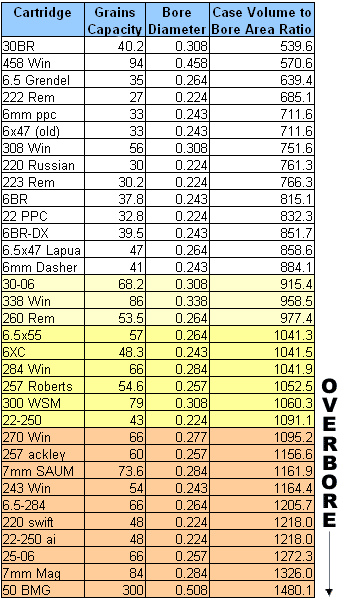

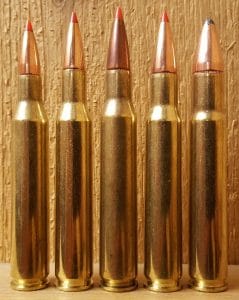
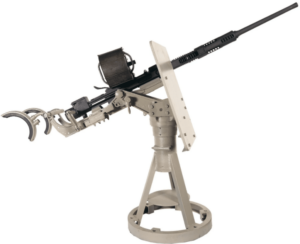
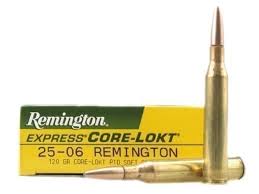

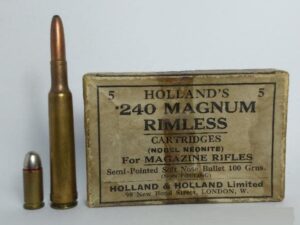

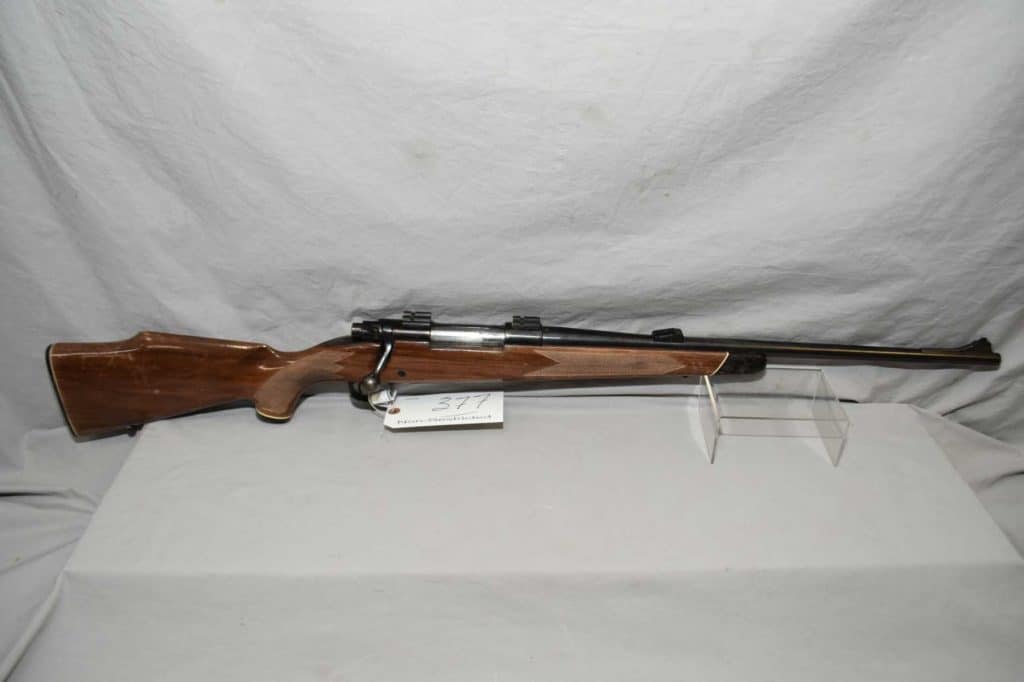

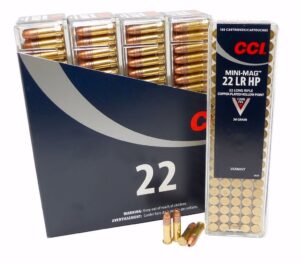
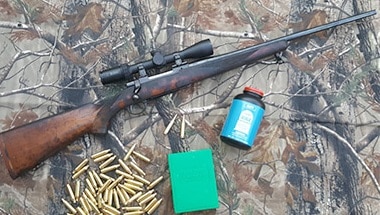









6 Responses
I shot 270’s for years and had good success killing big game. I always wondered what a different caliber would be like. I bought a Weatherby 25-06 and haven’t picked up a 270 since. Absolutely a phenomenal gun. I have shot 243’s but never hunted with them. I know guys that use them for everything.
I have both cartridges .243 Winchester and 25.06, in a Parker Hale 1200 for the first and a Tikka Whitetail Hunter for the latter. I can find almost no difference between the two with respect to accuracy. Naturally, there is a difference between the two, but even in this case, there is a marginal difference between the two. I have hunted both large caribou with both rifles, but only one elk bit the dust with either. It was a cow that fell flat with a 408 yard shot with one shot by the 25.06. So using some common sense, I would prefer the 25.06 for long range shots on larger animals like elk. However, I have a friend who is an expert hunter and who takes elk regularly with a .243.
Kudos to Mike Ramientas for a very informative writeup on the .243 vs. The 25.06. I own a Sako chambered in .243 and it is a great tack driver. That being said I recently ran across another Sako chambered in 25.06 and it piqued my curiosity as to which is the better round. I have now come to a decision, I’ll give the .243 to my wife in recognition of the lighter weight and recoil and buy the 25.06 for myself! Problem solved and the opportunity to add another Sako Custom Deluxe to my collection. Thank you again!
Trying to decide on my next rifle and caliber. Boytom line either caliber here would work killinh hogs. Which is my preferred target.
In the 2020 Remington Catalog document, in the table with the title “Centerfire Rifle Ballistics”, for Core-Lokt 100gr PSP cartridges, at 500 yards, are the following;
Calibre speed(fps)/kinetic energy(ftlb)
6mm Remington 1890/793
6mm Creedmoor 1524/516
243 Win 1786/708
25-06 Remington 1760/688
Interesting that the 243 Winchester and the 6mm Remington (which is not common) appear to have greater staying power than the 25-06 Remington.
Here is a curious observation for you.
In the Remington ammunition ballistics chart, as published by
Remington, at 500 yards, the 243 Winchester Cor-Lokt 100gr PSP has
more kinetic energy, and, more speed, than the 25-06 Remington
Cor-Lokt 100gr PSP. I assume that this is a matter of aerodynamics,
due to the different shapes of the bullets, giving the 243 more
staying power than the 25-06.